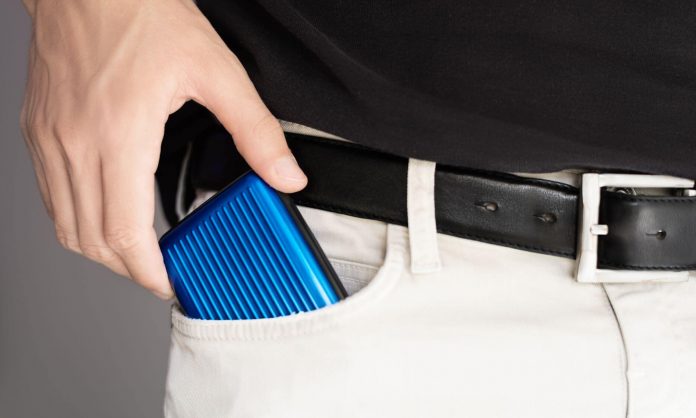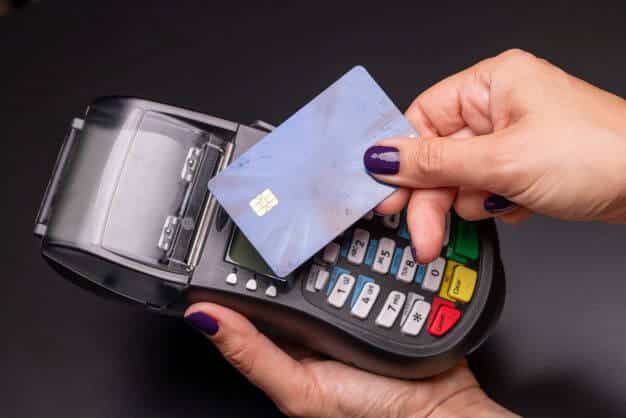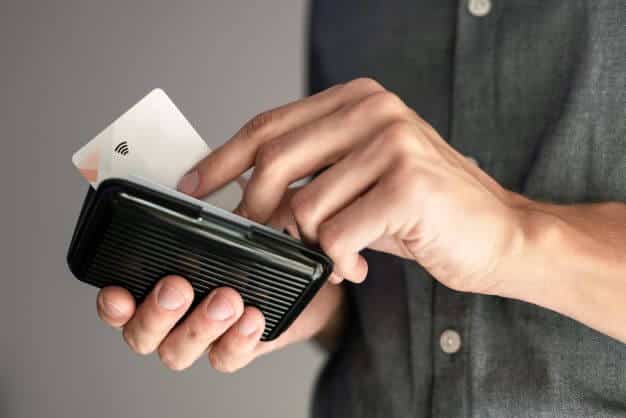
First Published: 5th October 2022, written by Michael Keane | Last Updated on 6th April 2024 | Reviewed and Edited by Chloe Safilo
If you always bring along cards or devices with radio-frequency identification (RFID) chips, it’s crucial to ensure safety by keeping your data secure. Most of the latest credit and debit cards are equipped with an RFID chip.
Unfortunately, your data is no longer safe nowadays due to the potential skimming attempts that are often undetected. When protection is your main concern, you may have heard about RFID wallets that often come in sleek and streamlined designs.
As RFID cards are becoming mainstream, take time to know more about how RFID technology works and how to ensure the safety of your data using an RFID wallet. Doing so will allow you to take proactive steps toward ensuring all your data stays protected.

What Is RFID?
For quite some time, RFID technology has been utilized to ensure data security in numerous industries. Essentially, the technology enables wireless data transmission using radio waves. Currently, most debit and credit cards contain an RFID chip or tag.
With RFID chips, you can use credit and debit cards to make purchases by conveniently tapping them against a card reader. There’s no need to hassle in inserting or swiping your card anymore. These cards are typically marked with three to four curved lines representing a wireless signal. This signal can be carried over distances ranging from a few centimetres to several meters.
The RFID chips emit a low-intensity radio wave once it comes in contact with a reader. Generally, the chip will not emit one until the signal from the reader activates the tag to relay information. Overall, it’s a convenient and effective method of data transfer. It’s best to take time to learn everything to know about RFID to ensure a head start in making the most of the technology and staying safe simultaneously.
Potential Dangers Of RFID
Unfortunately, the convenience of RFID chips makes it easier for your data to be stolen via electronic theft. The chip emits radio waves when it comes into contact with a reader, although this might happen without your knowledge. RFID skimming is a threat when a hacker uses a small remote to trigger the RFID tag in your card and access your credit or debit card information.
Data infiltration can happen when the hacker walks close to you in the mall or bumps into you on the sidewalk. It’s often impossible to catch the culprit due to the accessibility of anyone to RFID card readers and how instantaneous and undetected the process occurs.

A Close Look At RFID Wallets
Although RFID technology is becoming widespread, there are ways to protect your data. One of the straightforward ways to stop the data transfer is to block the signal physically. Since RFID utilizes low-intensity signals, you can readily protect your data by placing a layer of conductive metal or carbon fibre since these can block signals’ transmission.
A simple solution is to envelop your card or wallet with tin foil, however, investing in an RFID wallet may be advisable if you want a convenient and aesthetic approach. The entire RFID wallet or one of its card sleeves is usually made of RFID-blocking materials, preventing radio waves from passing through. As a result, the chip will not emit a signal. Even if it does, the transmission will not go through the wallet. The result is that it blocks access to all your credit and debit cards.
Today, you can find a good selection of RFID-blocking wallets and card cases with built-in protective layering in the wallet’s design. It ensures that all your cards stay safe and protected wherever you go.
Should I Invest In An RFID Wallet?
It’s crucial to remember that the frequency waves that RFID readers emit may be able to steal your data by readily penetrating through any material without regard to the type of clothing, wallet, bag, or backpack you have. Therefore, an RFID-blocking wallet should be a priority to prevent an RFID card reader from capturing your data. Nowadays, no one is safe, especially if you have items with RFID chips.
If you still have doubts about whether or not to invest in an RFID wallet, especially if the size and durability are your primary concerns. If you check the market, most modern models of RFID wallets no longer feature the bulky look. Due to technological advancements, RFID wallets are now sleek and slim. As for durability, most RFID wallets boast a lifespan comparable to or even longer than an average wallet, but it all varies depending on your usage and the level of wear and tear it’s exposed to.
Another concern for many individuals is when going through airport security. Since it’s a protocol to remove your wallet from your pockets, it’s not an issue to be worried about. Generally, an RFID wallet will go through the X-ray scanner without trouble.
Final Thoughts
If you hold several personal credit or debit cards with RFID chips embedded in them or you have access to sensitive assets, consider investing in a reliable RIFD wallet. Once you invest in one, it significantly minimizes the chances of having your data stolen.
With the great selection of RFID wallets on the market, you can choose one that best fits your style while having peace of mind that your data stays secure and safe at all times, wherever you go. And they also make a great gift idea for birthdays and anniversaries, and with Christmas looming close could be an ideal choice.























































